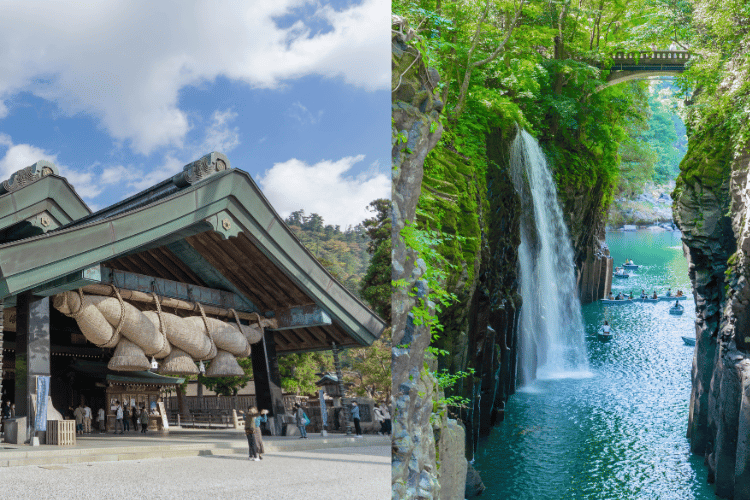The Birth of the Islands and the Divine Couple
According to legend, Japan was created by two deities: Izanagi and Izanami. Standing on the floating bridge of heaven, they stirred the ocean with a jeweled spear. As drops fell from the spear, the first island—Onogoro-shima—was formed. From there, the divine couple gave birth to the rest of the Japanese archipelago and a pantheon of gods.
Among their children was Amaterasu, the sun goddess, who became one of the most revered deities in Shinto. Her story is central to Japan’s imperial lineage, as emperors are said to be her direct descendants.
Sacred Sites That Bring Myths to Life
To truly appreciate these stories, one must visit the places where myth and reality intertwine:


One of Japan’s oldest shrines, believed to be the gathering place of all Shinto gods once a year. It honors Okuninushi, a deity associated with creation and matchmaking.

Said to be the place where Amaterasu hid in a cave, plunging the world into darkness. The dramatic cliffs and waterfalls evoke a sense of divine mystery.
Understanding Shinto: Nature, Purity, and Harmony
Shinto, Japan’s indigenous religion, is not based on scripture or dogma but on rituals and reverence for nature. Shrines are often located in places of natural beauty—forests, mountains, rivers—emphasizing the belief that the divine resides in the natural world.
Visitors will notice torii gates marking the entrance to sacred space, shimenawa ropes symbolizing purity, and rituals involving water purification. These elements reflect a worldview where harmony with nature and respect for unseen forces are paramount.
Takeaway
Japan’s mythical origins are more than just ancient stories—they are the foundation of its cultural identity. Understanding these myths helps travelers appreciate the spiritual depth behind many of Japan’s most iconic landmarks. Here are the key points to remember from this episode:
- Japan’s origin stories are rooted in mythology, not just history.
- Key deities include Izanagi, Izanami, and Amaterasu, the sun goddess.
- Sacred sites like Ise Shrine, Takachiho Gorge, and Izumo Taisha connect myth to real-world travel.
- Shinto emphasizes harmony with nature, purity, and respect for unseen forces.
FAQ
Are these myths still believed in Japan today?
While not taken literally by most, these myths are culturally significant and still influence festivals, rituals, and national identity.
Can tourists visit these sacred sites?
Yes! Most shrines are open to the public. Visitors are encouraged to follow respectful customs, such as bowing at the torii gate and purifying hands.
Is Shinto a religion I can practice?
Shinto is more a way of life than a doctrine. Anyone can appreciate its values—respect for nature, purity, and gratitude—without formal conversion.











.png)
.jpg)









